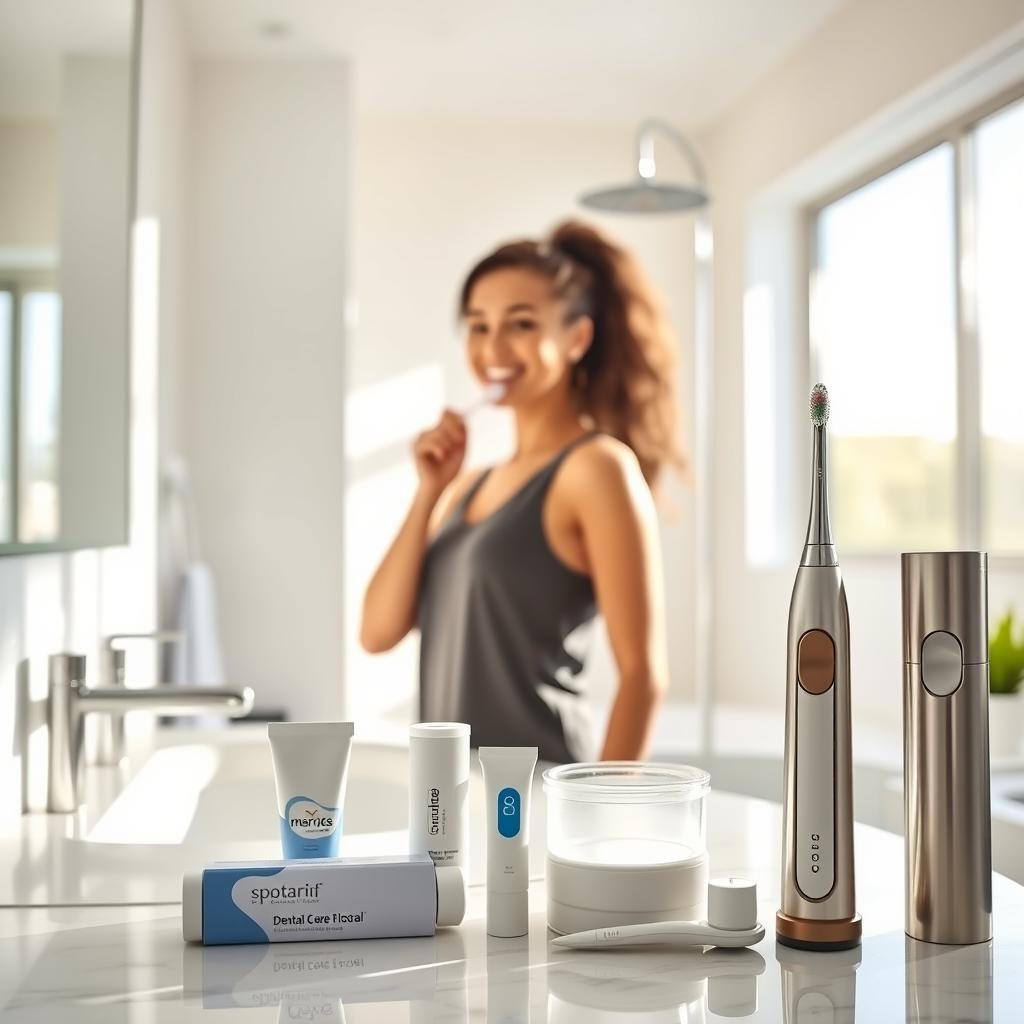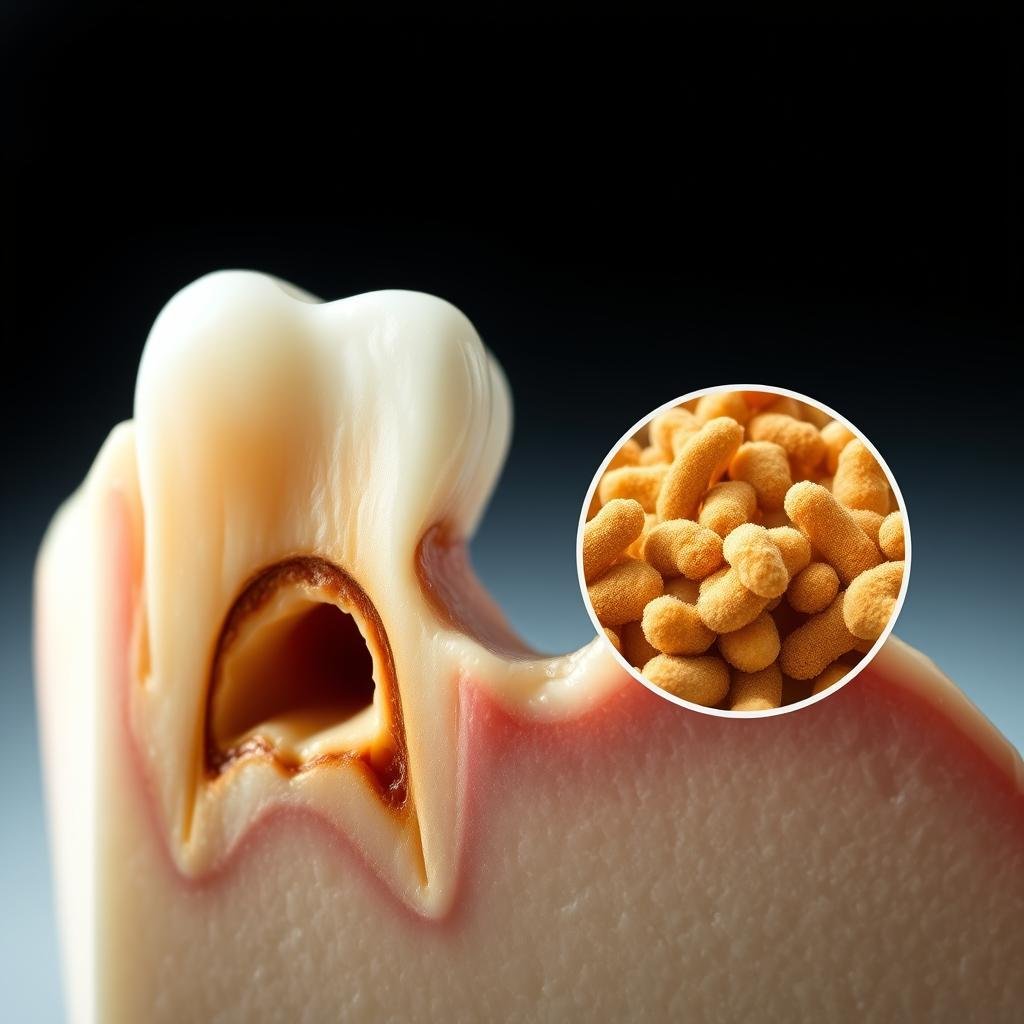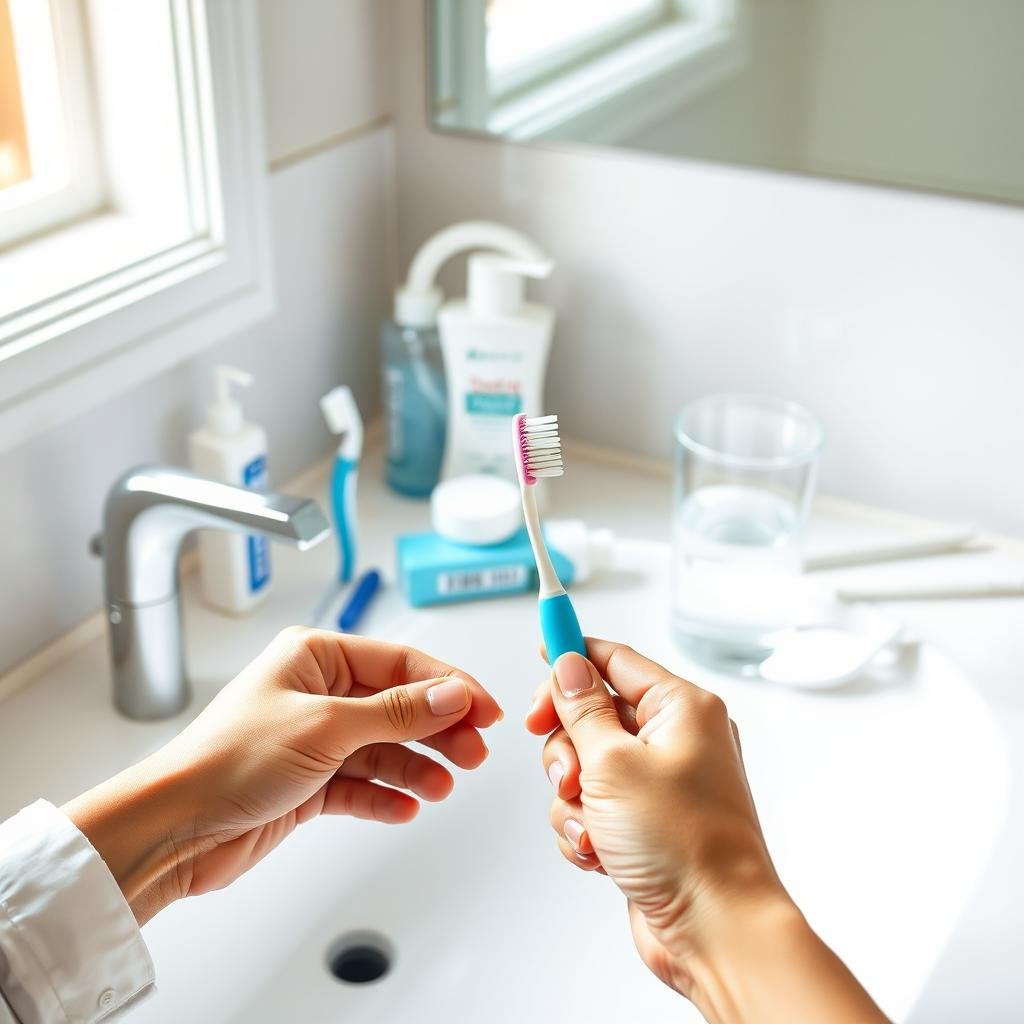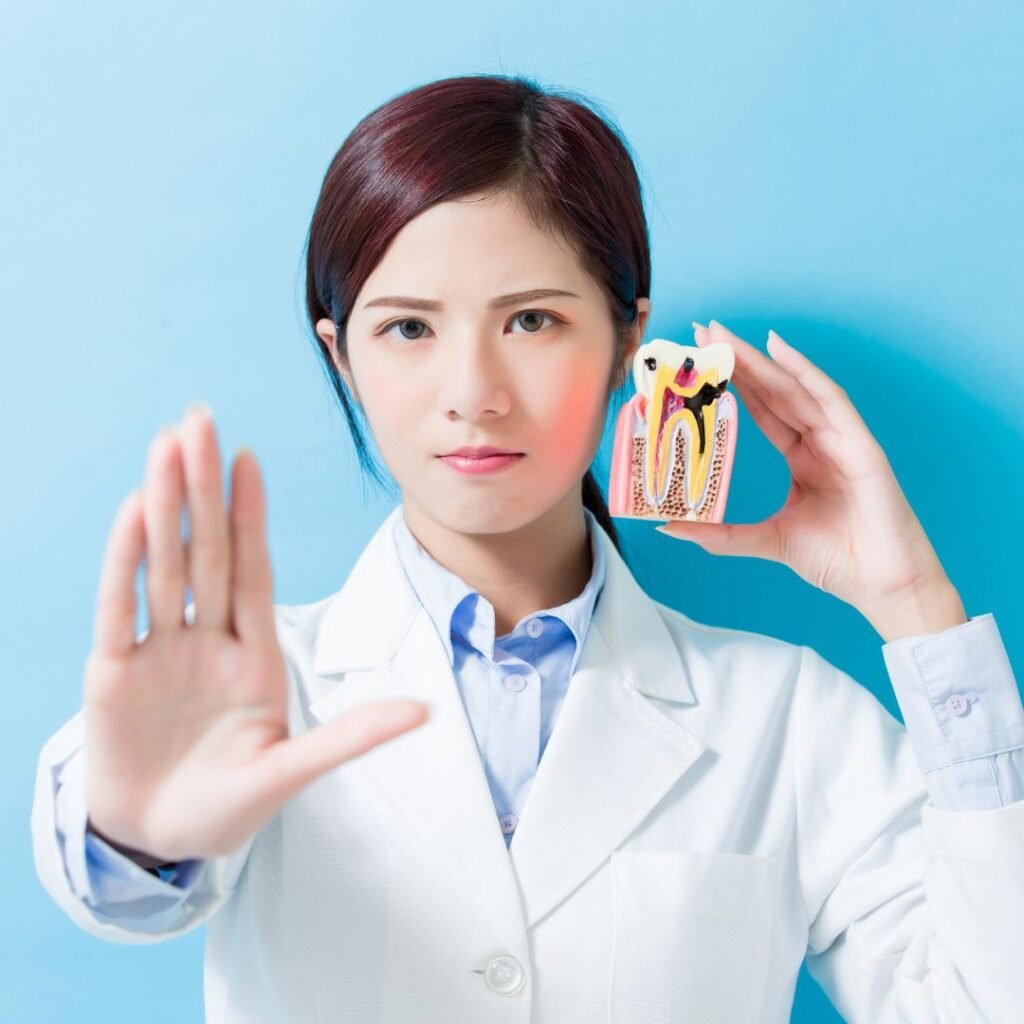How To Clean Your Own Teeth Like A Hygienist
Table of Contents
Keeping your teeth clean is essential for maintaining good oral health, preventing cavities, and avoiding gum disease. While regular professional cleanings with a dental hygienist are recommended, you can also take steps to keep your teeth in top shape at home.
In this guide, we’ll show you how to clean your own teeth like a hygienist, using the best tools and techniques to achieve a professional-level clean.

Imagine achieving that polished, fresh-from-the-clinic glow without leaving your bathroom. Dental experts agree: the secret lies in blending professional techniques with smart at-home habits. This guide unlocks methods used by hygienists to combat plaque, protect enamel, and maintain vibrant oral health.
But here’s the secret – it’s not just about brushing harder. Effective care combines precise tools, nutrient-rich formulas, and consistent routines. Products like Adem Naturals ProvaDent harness nature’s power through plant-based ingredients and advanced probiotics, supporting your mouth’s microbiome while gently removing buildup.
Why does this matter? Left unchecked, plaque becomes a breeding ground for bacteria that weaken enamel and irritate gums.
The solution? A strategic approach that mirrors clinical standards – from angled brushing motions to targeted flossing – paired with ingredients that nourish as they cleanse.
You’ll discover how to transform ordinary hygiene into a powerhouse routine. Learn why millions skip harsh abrasives for enzyme-powered alternatives, and how probiotics can outsmart bad breath at its source. Get ready to love your reflection again – one mindful brushstroke at a time.
Understand the Basics of At-Home Dental Hygiene

Maintaining a healthy smile starts with mastering daily care essentials. Your mouth hosts over 700 bacterial species – some beneficial, others harmful. Without proper care, these microbes form sticky plaque that erodes enamel and irritates gums.
Why Good Oral Hygiene Matters ?
Plaque hardens into tartar within 48 hours if not removed. This crusty layer creates hiding spots for bacteria that cause cavities and gingivitis. Fluoride toothpaste strengthens enamel while disrupting bacterial growth, making twice-daily brushing non-negotiable.
Key Terms: Plaque, Tartar, and Bacteria:
| Term | Definition | Risk |
|---|---|---|
| Plaque | Sticky biofilm containing bacteria | Erodes enamel |
| Tartar | Hardened plaque | Requires professional removal |
| Bacteria | Microorganisms in oral microbiome | Produce acidic byproducts |
Busy schedules don’t have to compromise care. Spend 30 seconds per quadrant when brushing, and swish water after meals to dislodge food particles. Pair these habits with angled brushing motions for clinical-level results.
Causes of Tooth Decay and Gum Disease

Your smile's worst enemies aren't always visible. Microscopic interactions between sugars and oral bacteria create a destructive cycle that weakens enamel and damages gum tissue. Let's examine the biological battleground inside your mouth.
The Sugar-Bacteria Relation
When you consume sweets or carbs, bacteria feast on these remnants. This process creates acids that dissolve protective enamel over time. Research shows plaque acids can lower mouth pH to 5.5 within minutes – the critical threshold for enamel erosion.
Three stages of destruction occur:
- Acid attacks: 20 minutes of enamel demineralization after sugar exposure
- Plaque cementation: Unremoved biofilm hardens into tartar in 48 hours
- Gum invasion: Toxins from bacteria trigger inflammation and tissue recession
Regular dental visits catch early warning signs like white spot lesions or bleeding gums. Hygienists use specialized tools to measure pocket depths – spaces between teeth and gums indicating disease severity. Left untreated, these pockets become bacterial reservoirs.
Prevention starts with disrupting the acid production cycle. Fluoride treatments remineralize weakened enamel, while antimicrobial rinses reduce bacterial colonies. Cutting sugary snacks to under 3 daily exposures gives saliva time to neutralize acids naturally.
Essential Tools and Products for Oral Hygiene

Equipping your bathroom with the right arsenal transforms ordinary brushing into a professional-grade ritual. Clinical studies reveal that optimized tools remove up to 100% more plaque than basic alternatives. Let’s explore what separates effective products from mediocre ones.
a. Power vs. Precision: The Tooth Brush
Oscillating electric toothbrushes outperform manual versions by breaking up stubborn plaque with rotating heads. Their built-in timers ensure proper two-minute sessions, while pressure sensors prevent gum damage. Look for compact brush heads that reach back molars and multiple cleaning modes for personalized care.
b. Dynamic Duo: Minerals and Micro-Cleaning
Fluoride toothpaste acts as enamel’s shield, replenishing minerals lost during acid attacks. Pair it with interdental brushes – tiny bristled tools that scrub between teeth where plaque hides. These cone-shaped cleaners remove debris in spaces regular floss might miss.
Replace electric toothbrush heads every three months and interdental brushes weekly. Opt for toothpaste carrying the ADA Seal of Acceptance, confirming fluoride content and safety standards. Together, these tools create a defense system that mirrors clinical results – minus the office visit.
Step-by-Step Guide: How to Clean Your Own Teeth Like a Hygienist
Mastering clinical-level results begins with precision timing and motion control. Dental professionals emphasize three core actions: systematic brushing, interdental cleaning, and strategic rinsing.
Let’s break down each component for maximum effectiveness.
1. Proper Brushing Technique and Timing

Position soft-bristled brushes at a 45-degree angle to gums. Use short, gentle strokes covering one tooth at a time. Divide your mouth into four quadrants, spending 30 seconds each. Set a timer to ensure full two-minute sessions twice daily.
Apply pea-sized toothpaste with fluoride. Avoid scrubbing motions – let the bristles do the work. Replace brushes every 90 days or when frayed. Over-brushing can wear enamel and cause gum recession.
Brushing is the cornerstone of oral hygiene, but doing it incorrectly can lead to missed spots or even damage to your enamel and gums.
Follow these expert brushing techniques:
- Use a soft-bristled or electric toothbrush: Electric toothbrushes are particularly effective at removing plaque.
- Angle your brush at 45 degrees to your gum line and use gentle circular motions.
- Brush for at least two minutes, twice a day. Spend about 30 seconds on each quadrant of your mouth.
- Brush all surfaces of every tooth: outer, inner, and chewing surfaces.
- Don’t forget your tongue: Brushing or scraping your tongue helps reduce bad breath by removing bacteria.
Pro Tip: Consider using a timer or an electric brush with a built-in timer to ensure you're brushing long enough.
2. Effective Flossing and Rinsing

Curve 18 inches of floss into a C-shape around each tooth. Slide gently beneath the gumline without snapping. Use fresh floss sections between teeth to prevent bacterial transfer. Follow with antimicrobial rinse for 30 seconds to dislodge residual particles.
Morning and evening routines matter most. Consistency removes plaque before it hardens into tartar. Pair these steps with interdental brushes for tight spaces. Your dedication pays off in brighter smiles and healthier gums.
Flossing and rinsing reach areas your toothbrush can't. They’re crucial in maintaining a truly clean mouth.
Flossing Tips:
- Use about 18 inches of dental floss, wrapping most of it around your fingers, and gently glide it between your teeth.
- Curve the floss into a "C" shape around each tooth and move it up and down.
- Don’t forget the back of your last molars.
- If traditional flossing is difficult, try interdental brushes or a water flosser.
Rinsing Tips:
- Choose an alcohol-free, antibacterial, or fluoride mouthwash.
- Swish the mouthwash for at least 30 seconds after brushing and flossing.
- Avoid eating or drinking for 30 minutes after rinsing to let it work effectively.
3. Incorporate Oral Probiotics Like Adem Naturals ProvaDent
Modern oral care evolves beyond basic brushing routines. Adem Naturals ProvaDent introduces a science-backed approach to maintaining balance in your mouth’s ecosystem.
This advanced probiotic complex combines nature-derived nutrients with targeted bacterial strains designed to enhance your existing hygiene practices.
a. How ProvaDent Supports Your Mouth’s Natural Defenses?
Your oral microbiome thrives when beneficial bacteria outnumber harmful strains. ProvaDent delivers 3 billion CFUs of clinically studied probiotics per serving. These friendly microbes crowd out odor-causing bacteria while supporting gum tissue resilience.
The formula includes zinc citrate and vitamin C – nutrients known to strengthen soft tissues. Unlike harsh mouthwashes that disrupt microbial balance, this blend works synergistically with fluoride toothpaste. It creates an environment where enamel stays protected and gums maintain their natural defense mechanisms.
b. Benefits of Fresher Breath, Healthier Gums, and a Vibrant Smile
Users report noticeable changes within weeks. Morning breath becomes less intense as probiotics neutralize sulfur compounds. Gum sensitivity often decreases due to reduced inflammation from balanced bacterial populations.
ProvaDent’s plant-based enzymes gently lift surface stains without abrasives. Combined with regular dental visits, this dual-action approach helps maintain pearly whites. Many find their smile appears brighter as oral pH stabilizes and plaque accumulation slows.
Dentists increasingly recommend probiotic supplements as part of comprehensive care. When paired with proper brushing and flossing, ProvaDent offers a proactive strategy for long-term mouth health. It’s not just about cleaning – it’s about cultivating an environment where your smile naturally thrives.
4. Expert Dental Care from Professionals

Elevating your daily routine with professional insights can transform ordinary care into clinical-grade protection. Tiny adjustments – like angling your toothbrush or embracing innovative tools – create measurable improvements in gum health and plaque control.
a. The Correct Brushing Angle and Method
Position your toothbrush at a 45-degree angle toward the gum line. This allows bristles to clean beneath the gum margin where harmful bacteria hide. Use gentle circular motions, applying no more pressure than holding a ripe tomato.
Dentists recommend dividing your mouth into quadrants. Spend 30 seconds on each section, covering outer surfaces first. Flip the brush vertically for front teeth and tilt it backward for molars. Replace manual brushes every three months or when bristles flare.
b. Utilizing Modern Tools Like Air-Flow® Technology
Air-Flow® systems combine water, air, and fine powder to blast away stains between teeth. Unlike traditional scraping, this method reaches 35% deeper into gum pockets according to clinical studies. Many hygienists use it during cleanings for efficient plaque removal.
For home care, consider electric toothbrushes with pressure sensors. Pair them with fluoride paste containing nano-hydroxyapatite – a mineral that bonds to enamel. Adults with sensitive gums benefit from rubber-tip stimulators that massage tissue while disrupting plaque.
Three key tips from dental experts:
- Let tools do the work – avoid aggressive scrubbing
- Schedule professional cleanings every six months
- Use interdental cleaners before brushing to loosen debris
These methods prevent gum recession by maintaining gentle yet effective contact. Consistent practice helps adults preserve their natural smile while minimizing future dental work.
5. Prevent Common Issues: Bad Breath, Plaque Build-Up, and Gum Disease

A fresh mouth starts with smart daily habits that go beyond basic brushing. Strategic adjustments create an environment where harmful microbes struggle to thrive while protecting your natural defenses.
Combat morning breath by scraping your tongue first thing – this removes overnight bacteria buildup. Follow with fluoride toothpaste containing zinc citrate to neutralize odor-causing compounds. Hydration plays a key role – sip water throughout the day to maintain saliva flow, nature’s best plaque remover.
Plaque control requires disrupting its growth cycle. Use interdental brushes after meals to dislodge food particles before they mineralize. Swap sugary snacks for crunchy vegetables – their fibrous texture scrubs teeth surfaces naturally.
- Rinse with plain water for 30 seconds post-meals when brushing isn’t possible
- Schedule mouthwash use 30 minutes after brushing to preserve fluoride benefits
- Inspect gums weekly for redness or swelling – early signs of infection
Bacterial overgrowth often starts in overlooked areas. Angle your brush toward the gumline where 70% of plaque accumulates. Those with dry mouths benefit from xylitol gum – it stimulates saliva without feeding harmful microbes.
Persistent bad breath or bleeding gums warrants professional evaluation. Dentists spot early disease signs through millimeter-precise pocket measurements. Pair six-month checkups with pH-balancing rinses to maintain microbial harmony.
Maintaining a consistent and thorough oral care routine helps prevent the most common dental issues:
Bad Breath (Halitosis):
- Brush your tongue daily.
- Stay hydrated throughout the day.
- Use a mouthwash that fights bacteria, not just masks odor.
Plaque and Tartar Build-Up:
- Brush and floss daily to remove plaque before it hardens into tartar.
- Use plaque disclosing tablets occasionally to identify problem areas.
- Consider using a dental scaler very gently to remove minor buildup (with caution).
Gum Disease Prevention:
- Don’t skip flossing—it’s key to preventing gingivitis.
- Massage your gums gently with your toothbrush.
- Pay attention to bleeding or swollen gums and consult a dentist if symptoms persist.
6. Nutritional and Lifestyle Tips for a Healthier Mouth

Your diet plays a starring role in maintaining a resilient smile. What you eat directly influences enamel strength and gum vitality – acidic or sugary choices erode defenses, while nutrient-rich foods rebuild them. Smart eating habits work alongside quality toothpaste to create lasting protection.
Powerhouse Foods for Better Oral Health
Sugary snacks and soda create acid baths that weaken enamel. Swap them for crunchy vegetables that scrub surfaces naturally. Cheese and yogurt provide calcium to remineralize teeth, while leafy greens supply vitamin C for collagen production in gums.
| Food | Key Nutrients | Benefits |
|---|---|---|
| Almonds | Calcium, Phosphorus | Rebuild enamel |
| Apples | Fiber, Water | Stimulate saliva |
| Green Tea | Polyphenols | Reduce bacteria |
Limit soda to special occasions – its phosphoric acid leaches minerals from teeth. Drink water after meals to neutralize acids. Those who snack frequently should choose nuts over candy to avoid constant sugar exposure.
Lifestyle choices amplify dental hygiene efforts. Smoking dries the mouth and stains teeth, while alcohol reduces saliva’s protective effects. Combine daily flossing with omega-3 rich foods like salmon to combat inflammation naturally.
Three simple rules for lasting health:
- Eat calcium-rich foods with meals
- Rinse after acidic drinks
- Choose xylitol gum when brushing isn’t possible
These strategies help keep teeth strong between brushings. Remember – what benefits your mouth often boosts overall health too.
Conclusion
Achieving a clinic-quality smile starts with smart daily choices. Combine angled brushing with fluoride toothpaste to protect enamel and disrupt plaque. Pair this with interdental tools that reach hidden spaces – where 70% of buildup occurs.
Advanced solutions like Adem Naturals ProvaDent offer game-changing support. Their probiotic formula balances your mouth’s ecosystem while gently lifting stains. This approach helps maintain fresh breath and resilient gums between dental visits.
Consistency matters more than intensity. Even small upgrades – like setting a two-minute timer or swapping sugary snacks – create lasting improvements. Schedule checkups every six months to catch issues early and refine your technique.
Your commitment today shapes tomorrow’s smile. Trust proven methods, lean on quality products, and partner with your dentist for guidance. That bright, confident grin? It’s closer than you think.
Now that you know how to clean your own teeth like a hygienist, do adopt these into your daily routine to experince the difference.

